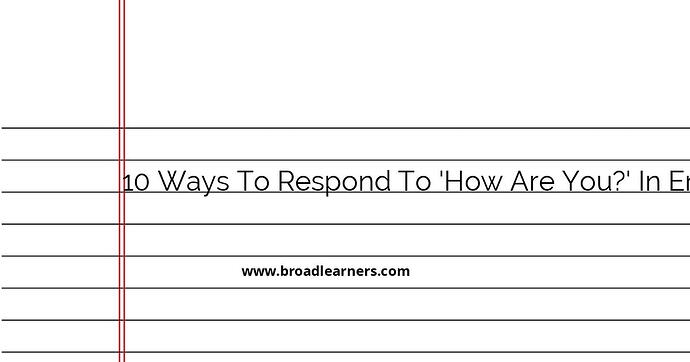The question 'How are you?' is a standard greeting in emails that often requires a polite and professional response. It's an opportunity to convey your mood, progress, or engagement level in a manner that maintains the courteous tone of professional communication. Here we provide you with 10 ways to respond to 'How are you?' in an email:
- I'm doing well, thank you for asking.
- Thank you for asking, I hope you're doing well too.
- I'm great, thank you. How about yourself?
- Doing well, thank you. I trust you're having a good day.
- I'm fine, thank you for checking in.
- Thank you for asking, I'm having a productive day.
- All is well on my end, I hope the same for you.
- I'm good, thank you and I hope you're doing well.
- Thank you for your concern, I'm managing well.
- I'm doing well, thanks. How are things with you?
Now let's delve into each alternative response in detail:
1. I'm doing well, thank you for asking
This response is simple and straightforward. It indicates that everything is going well on your end and acknowledges their query.
Example:
Hi Lisa,
I'm doing well, thank you for asking. How's the project coming along on your side?
Best regards,
George
2. Thank you for asking, I hope you're doing well too
Expressing hope for their well-being in return conveys a courteous touch and shows that you care about the other person's condition as well.
Example:
Dear Mark,
Thank you for asking, I hope you're doing well too. Looking forward to our meeting on Thursday.
Kind regards,
Anna
3. I'm great, thank you. How about yourself?
This response conveys positivity and reciprocates the question by inviting them to share their status as well, promoting a friendly interaction.
Example:
Hi Tim,
I'm great, thank you. How about yourself? Excited to catch up on our recent developments.
Best,
Sarah
4. Doing well, thank you. I trust you're having a good day
By trusting that they're having a good day, you convey optimism and sincerity, helping to foster a positive professional environment.
Example:
Hello James,
Doing well, thank you. I trust you're having a good day. Let me know if there's anything you'd like to discuss.
Sincerely,
Jessica
5. I'm fine, thank you for checking in
This response is brief yet polite, appreciating their concern without elaborating too much, suitable for more formal correspondence.
Example:
Dear Elaine,
I'm fine, thank you for checking in. If you have any updates about the report, please share them with me.
Regards,
Anthony
6. Thank you for asking, I'm having a productive day
Indicating that you are having a productive day shows positivity and energy, and it can create a sense of dynamic engagement.
Example:
Hi Jennifer,
Thank you for asking, I'm having a productive day. Looking forward to our joint session tomorrow.
Cheers,
David
7. All is well on my end, I hope the same for you
This response acknowledges well-being while also expressing hope for their positive condition, enhancing camaraderie.
Example:
Hello Sam,
All is well on my end, I hope the same for you. Let’s coordinate our schedules for next week's meeting.
Warm regards,
Carla
8. I'm good, thank you and I hope you're doing well
By stating that you're good, you convey assurance and stability, while also reflecting concern for the other person's health or mood.
Example:
Hi Tom,
I'm good, thank you and I hope you're doing well. Awaiting your feedback on the proposal.
Best,
Alice
9. Thank you for your concern, I'm managing well
This response is particularly suitable for situations where you want to acknowledge ongoing efforts or challenges and imply resilience.
Example:
Dear Karen,
Thank you for your concern, I'm managing well. Please let me know if there are any more details you require.
With respect,
Richard
10. I'm doing well, thanks. How are things with you?
By asking about 'things' with them, you acknowledge not just their well-being but also their work or circumstances, fostering a deeper interaction.
Example:
Hi Emma,
I'm doing well, thanks. How are things with you? Eager to discuss our upcoming project deliverables.
Best wishes,
Chris
These 10 responses can help you convey the right tone in your email communication while maintaining professionalism and courtesy.
Did I miss anything? Respond below
